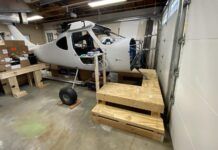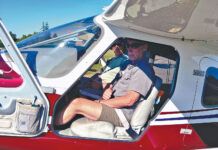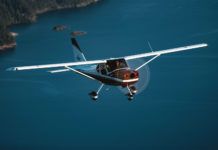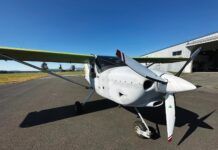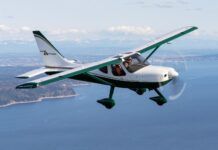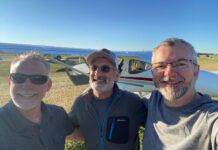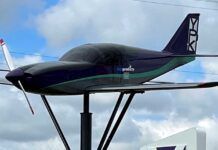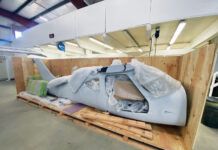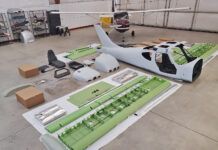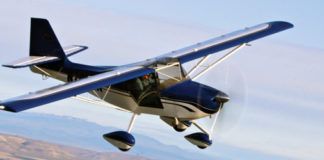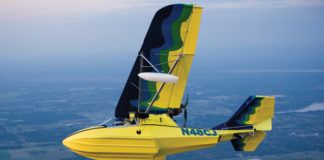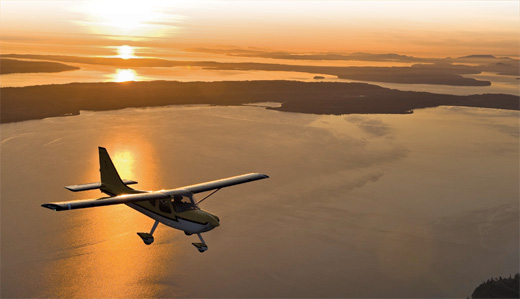 Welcome to the first of what we expect to be many web-based updates on KITPLANES big project for the year, the construction of a GlaStar Sportsman 2+2, N30KP, that will be both a traveling tool for the staff and a testbed for new equipment and technologies in the future. Editor-in-Chief Marc Cook picks up the story:
Welcome to the first of what we expect to be many web-based updates on KITPLANES big project for the year, the construction of a GlaStar Sportsman 2+2, N30KP, that will be both a traveling tool for the staff and a testbed for new equipment and technologies in the future. Editor-in-Chief Marc Cook picks up the story:
Here in the middle of March it’s hard to remember every single detail of my whirlwind January. It started with a 1200-mile drive to Arlington, Washington, home of Glasair Aviation’s Customer Assembly Center to build a Sportsman 2+2 under a new, highly condensed program that would become the prototype for the company’s new two week to taxi format, and ended with an airplane circling the Arlington airport. With me a the controls. In fact, we started January 9, and flew January 31.
We’ll be starting our full coverage of the build process, hoping to let you learn from my experience, in the August issue of KITPLANES. As successful airplane builders know, there are myriad stories under the surface, minor battles waged, won or lost, and hundreds of small decisions to be made ranging from which engine or avionics package to use to just how many zip ties to buy.
For now, heres an overview of the project. As of mid March, the airplane was nearly through its Phase I flight testing, which will be the full 40 hours owing to its Experimental prop and engine combination.
OK, I’ll answer the big question first: How in the world can you build an airplane and have it flying in 18 days? Let’s start this discussion by saying that the airplane is in no way done. It has no paint aside from the primer that the composite parts come with right out of the mold. It has no interior to speak of except for the excellent Oregon Aero seat cushions. Many small aspects of the engine installation are still to be fine tuned, including some big and small items like getting the oil temperature down and stopping the crankcase breather from puking a small puddle of oil on the hangar floor after each flight.
Back the the program: The CAC employs dramatic compression of time for the builder, not by some magical machine that busts open the space/time continuum-I know, too much Star Trek-but by organizing tools, materials and brainpower so that the builder does virtually nothing but actually build. There’s no scrabbling around for tools; no looking for the correct number of rivets in the right size; no building jigs and fixtures that will be used once or twice. All that is done, and the benefit stemming from it is to distill the builders efforts. It works. (More on this program in another installment.)
Of course, getting all the pieces heading to Arlington in time for this super-truncated build took a lot of effort up front. Late last year, I went to Tulsa, Oklahoma, to oversee the buildup of my engine, an IO-390-X kit engine built from Lycoming parts by Barrett Precision Engines. It was slightly risky, going for the IO-390, as it hadn’t been done before on the Sportsman. However, Glasair Aviation felt that it would be a popular option and elected to create a new engine mount and cowling to fit the larger engine; it is slightly wider and a bit heavier than the parallel-valve O-360 normally fitted to this airplane. But this change created its own set of integration issues, most of which were worked out on the fly.
In addition to having the engine built up and the prop-a new Hartzell blended-airfoil 74-inch jobbie-I had to get the panel and avionics going well in advance of the start time. Pacific Coast Avionics handled the panel mechanicals and wiring to mate with a new airframe electrical harness built by the CAC. You’ll see more of the panel later, but its made up of two 7-inch Dynon displays, the D-100 EFIS on the left and the new D-120 engine monitor on the right. Primary avionics come from PS Engineering with a PMA-8000 audio panel and Garmin with a GPSMAP396, SL30 nav/comm and GTX327 transponder. TruTrak is represented by a Digiflight IIVSGV two-axis autopilot and 3-inch electronic attitude indicator
This was, to put it mildly, an intense experience. During my time there, the CAC was ably manned by Brandon Rodstol and Seth Town, who worked with me the entire time, as well as Ted Setzer, who has been with the company since the Stoddard-Hamilton days and is a superb prototyper, as is often the case when your day job is to build factory demonstrator aircraft. When we begin our coverage of the build process in the August issue of the magazine, I’ll get into more details of the CAC program.
At the moment, Im off to the hangar. There are lots of little things to tend to-just like every other homebuilt. Thats because, as we know, building and first flight combine to make just the first part of the journey. What do they say? Often finished but never done.

